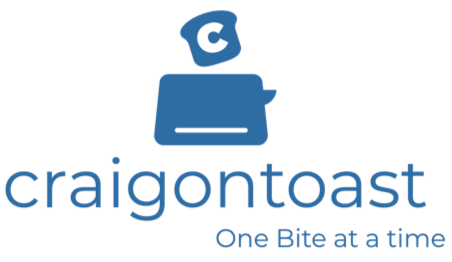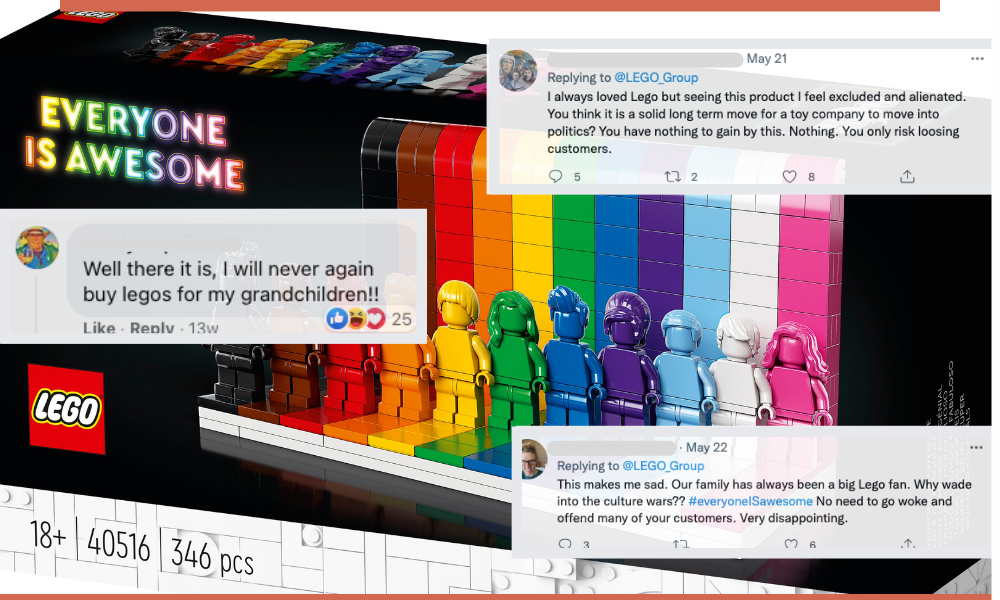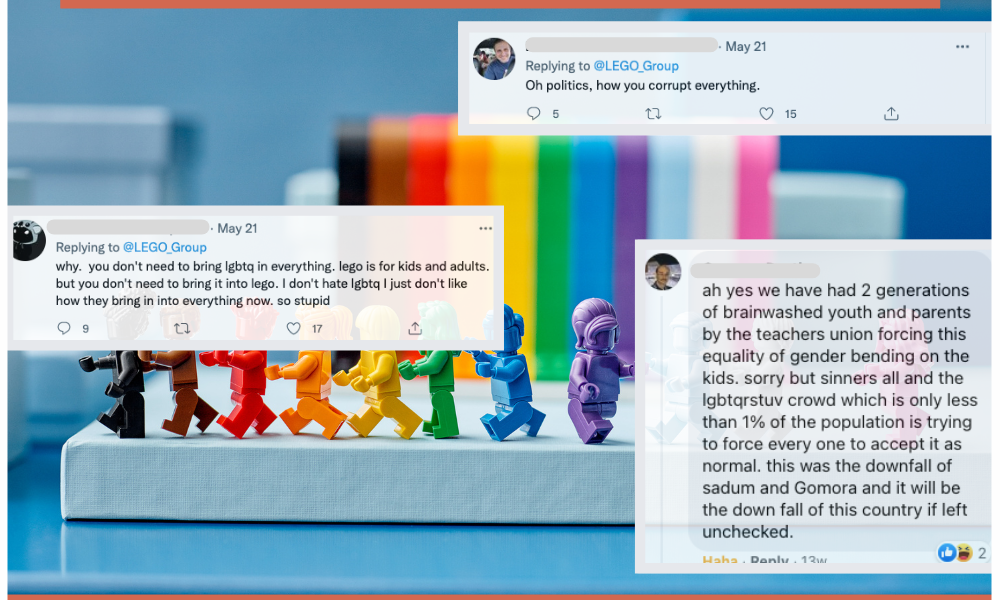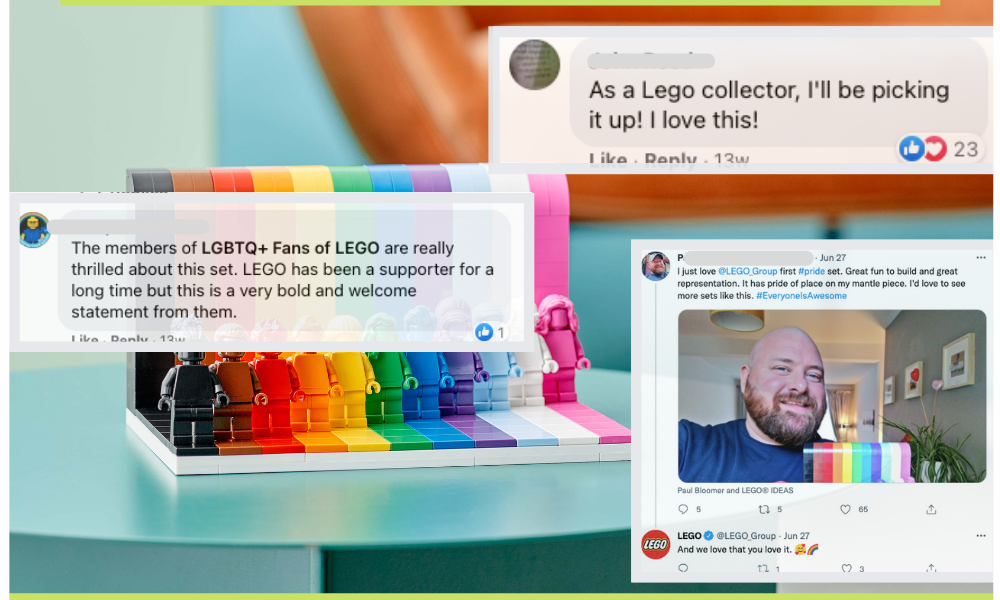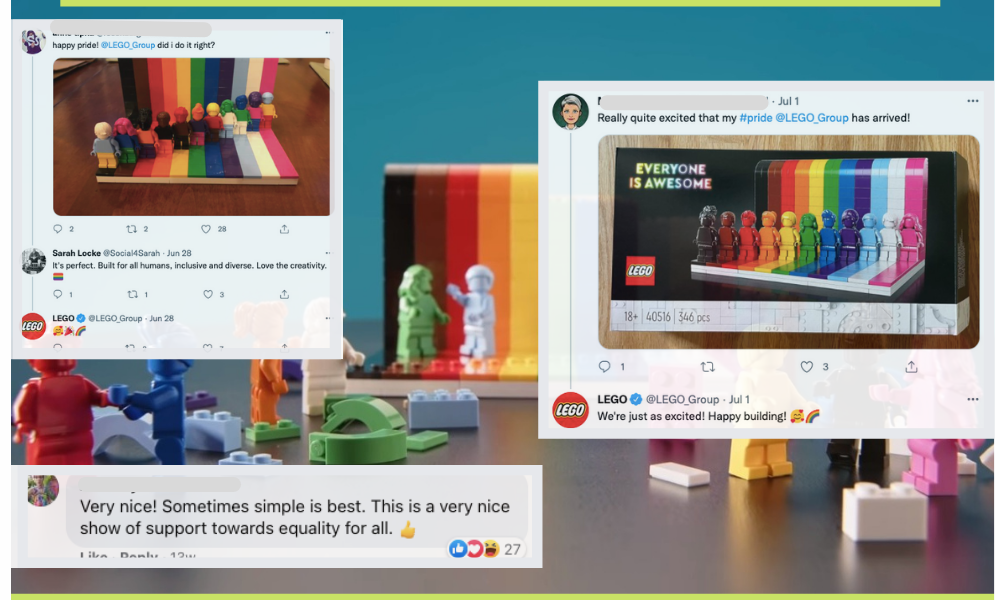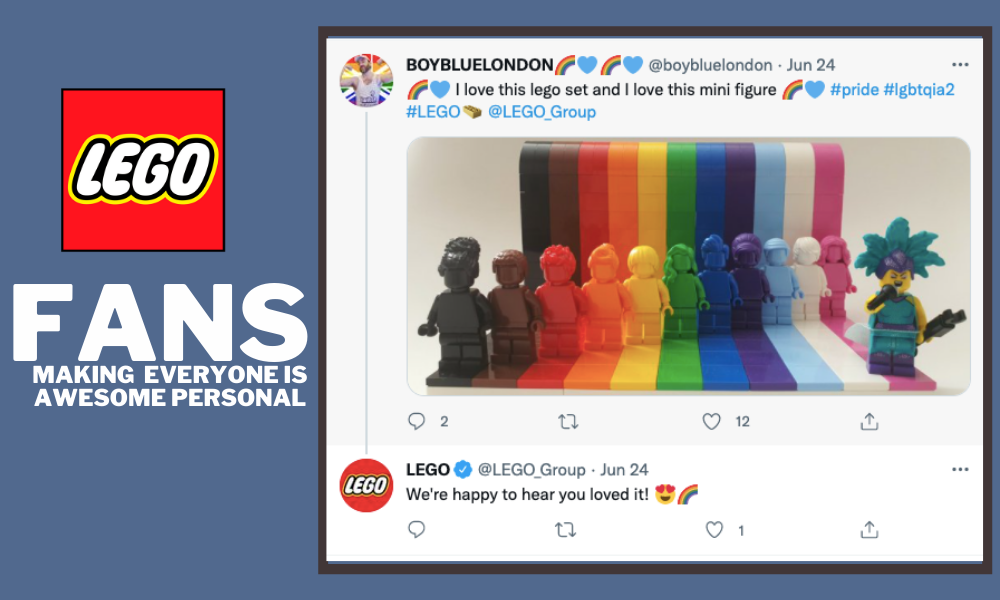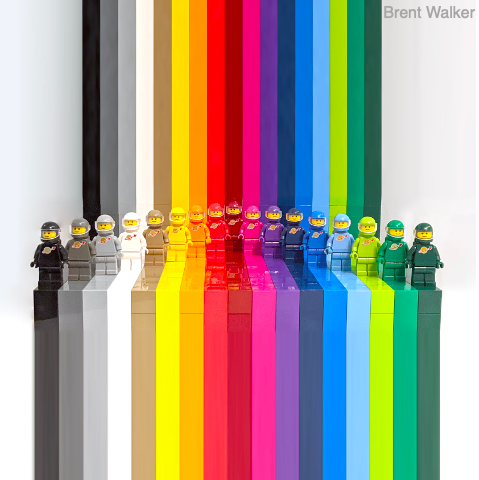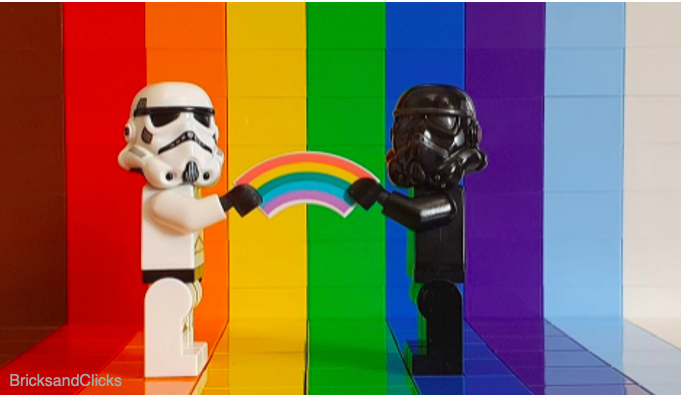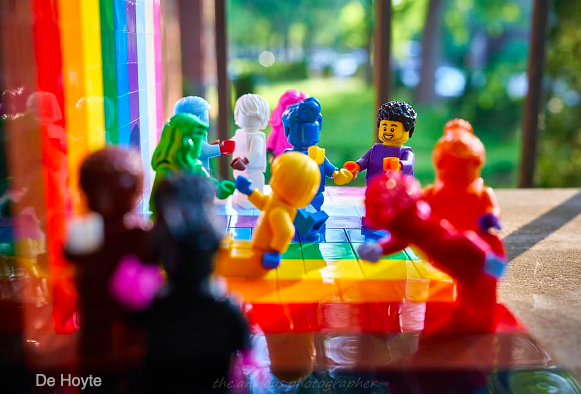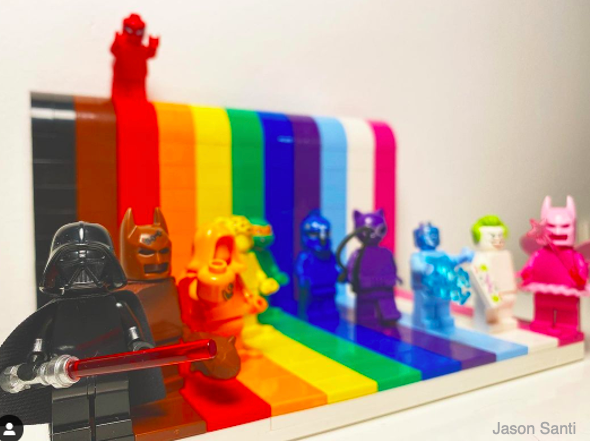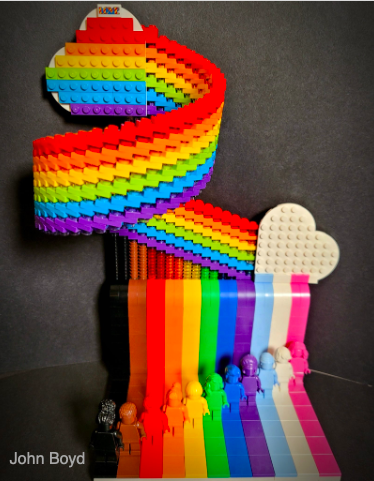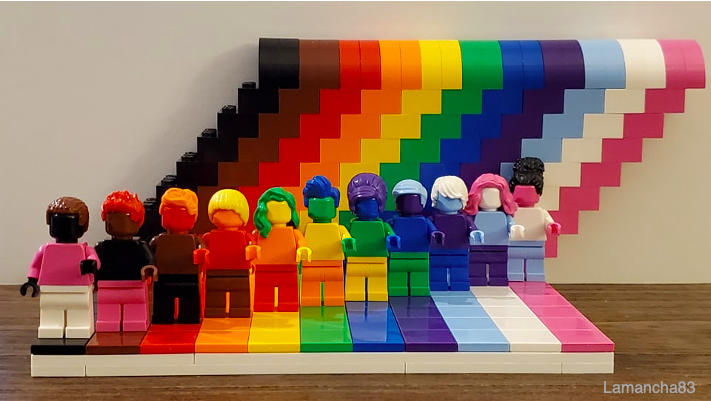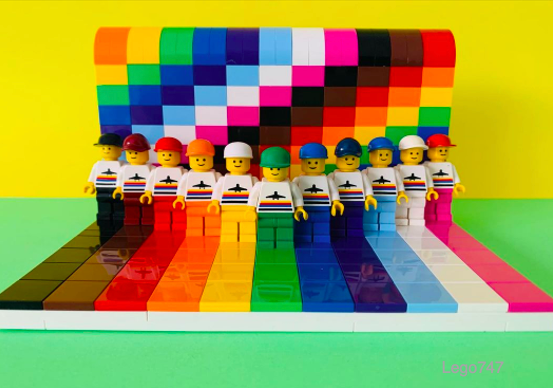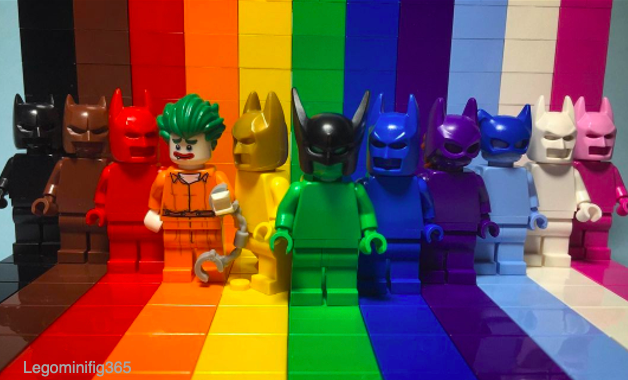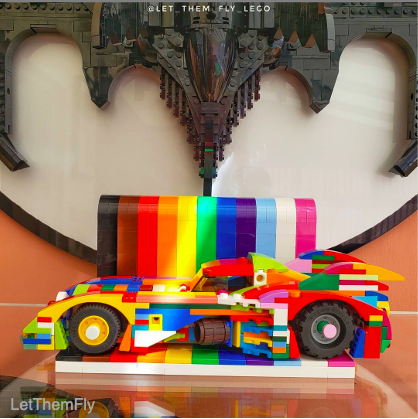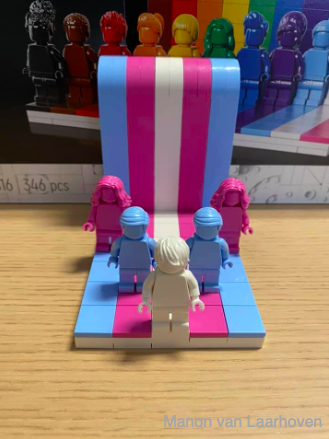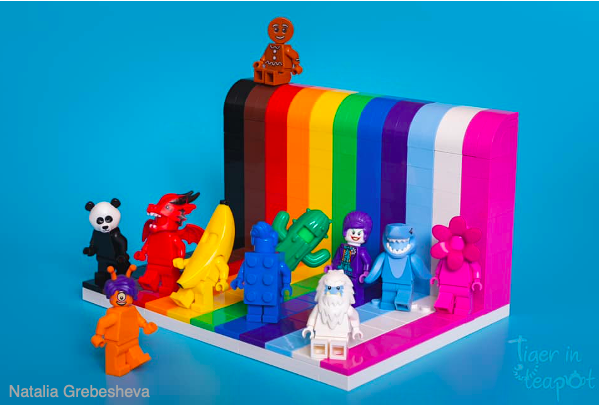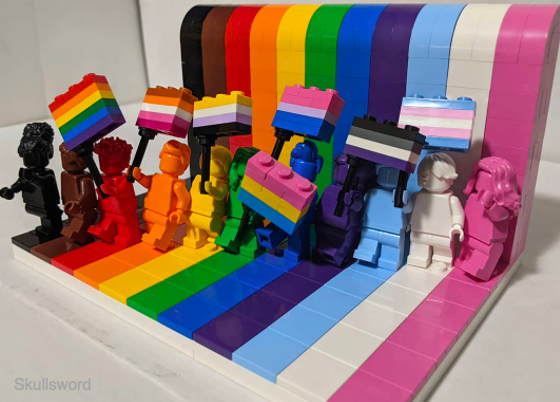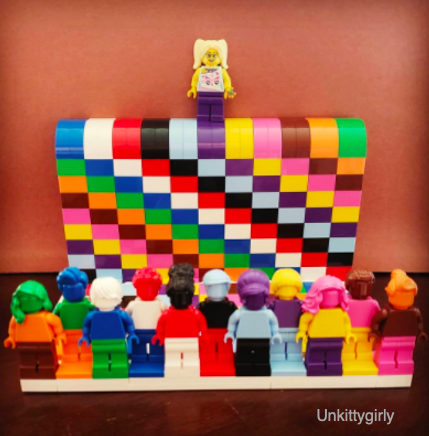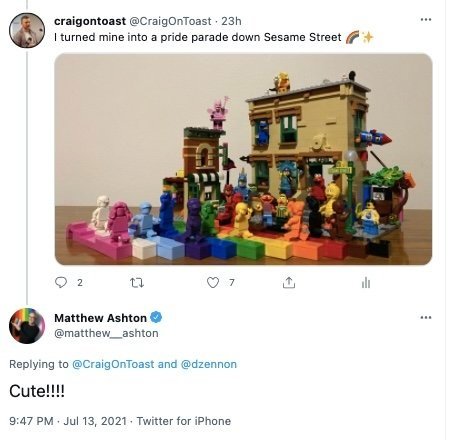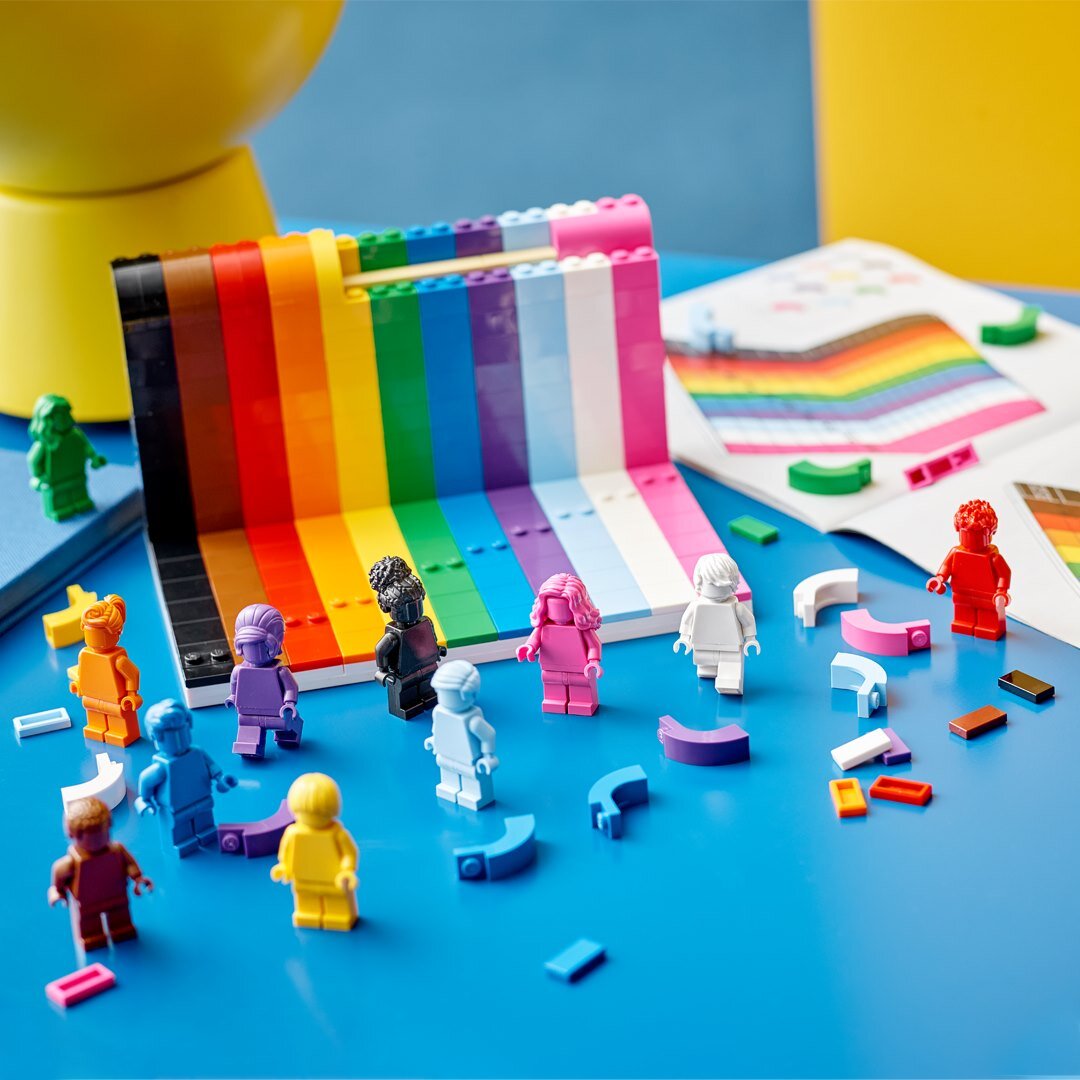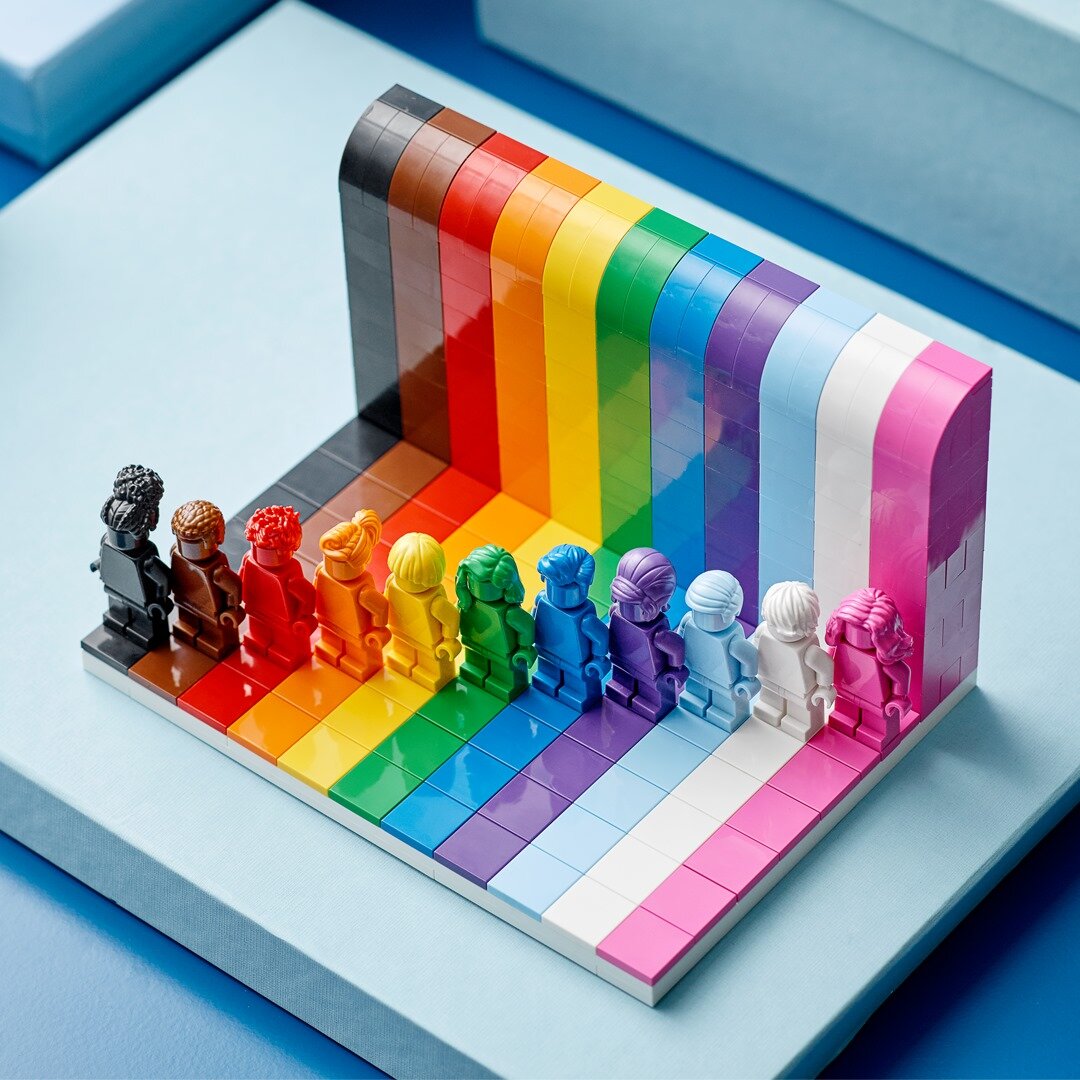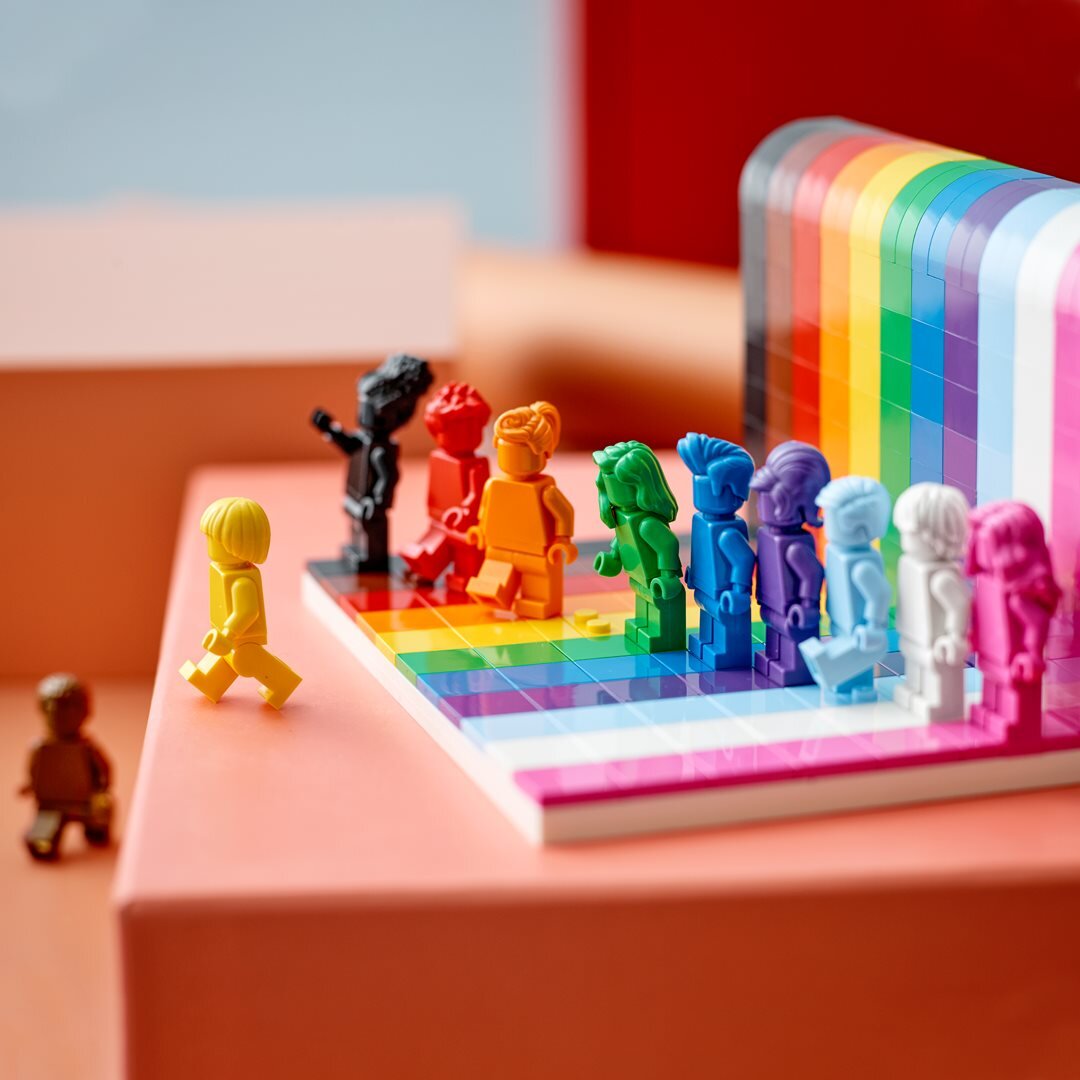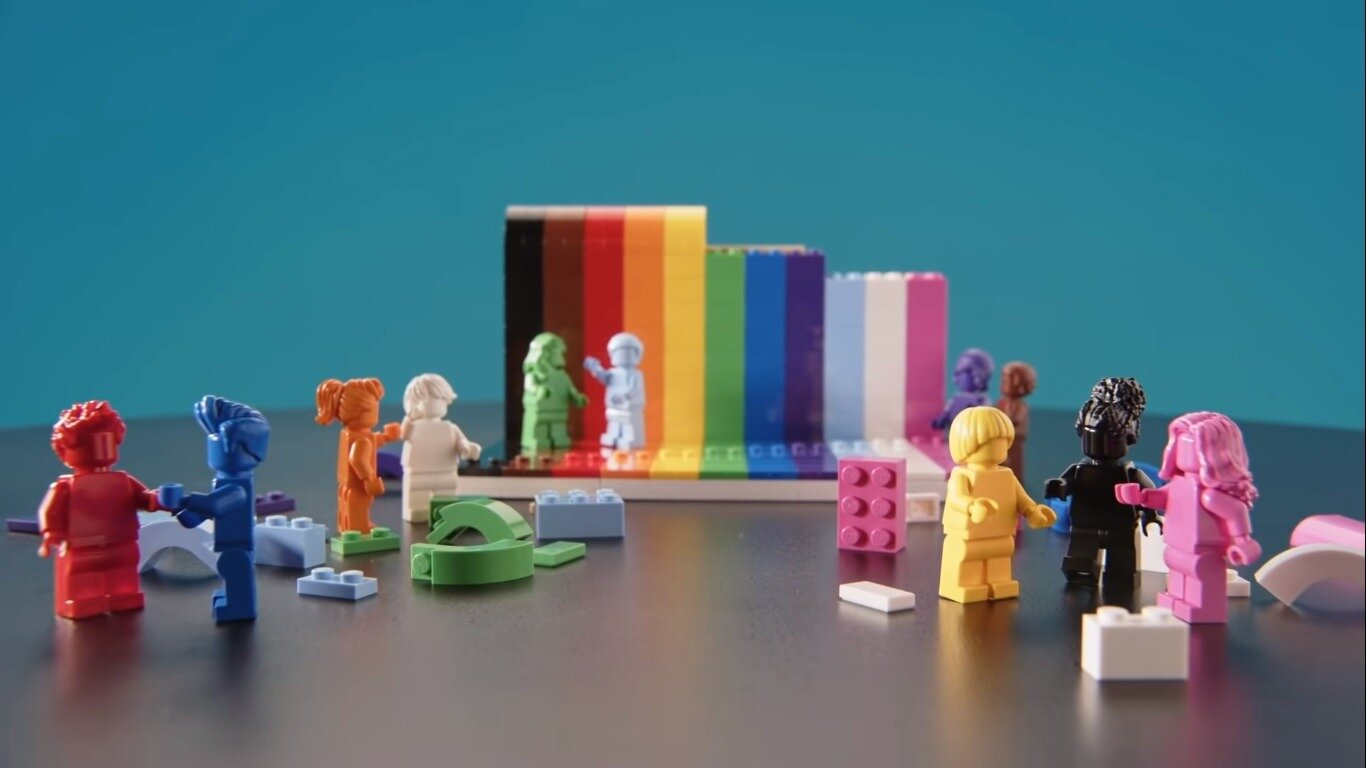Lego - Everything IS Awesome
Lego dropped the news that the first official set recognising the LGBTQIA+ community and fans, “Everyone is Awesome”, was being released on June 1. Coinciding with Pride Month most fans agreed, everyone is awesome, but for some the recognition and set are worse than stepping on a Lego.
>> Everyone is Awesome LEGO® set celebrates fans’ diversity <<
“Everyone is unique, and with a little more love, acceptance and understanding in the world, we can all feel more free to be our true AWESOME selves! This model shows that we care, and that we truly believe ‘Everyone is awesome’!” - Matthew Ashton, Vice President, Design, Lego.
The creation of VicePresident-Design at Lego, Matthew Ashton, Everyone is Awesome is designed to celebrate diversity, advocate inclusion, build visibility and put all the pieces together to create greater representation and acceptance, particularly for the LGBTQIA+ community, all with Lego clutch power to help it stick. The message may be a positive, inclusive, empowering one for many, but it’s not surprising that the set has been a controversial one. Its release has stirred emotions in both the AFOL ( Adult Fans of Lego) and broader communities, and received a mostly positive but mixed response. Enthusiastic supporters embraced the advocacy and representation created with Everyone is Awesome. AFOL’s modified and personalised their set in creative and different ways, some bought their first Lego set since they were a child, or ever, others gifted the set, and with around 15K uses of the hashtag #everyoneisawesome on instagram, a lot shared it online and off.
Not everyone is or appreciates awesome though, and many disliked, disagreed with, objected to and complained on social media and to Lego directly about the set - or to be more accurate, the advocacy for the LGBTQIA+ community that Everyone is Awesome represents.
In the spirit of the play well culture built into its name, Lego has long held promises to help build a better world, and values that guide the culture, operations and even the types of sets that can and can’t be made. One of these values is to keep Lego and politics separate, with the principle of not designing any sets that represent past, present or future political issues, groups, leaders, vehicles, platforms or events.
Some fans have attempted to use this principle of remaining apolitical against Lego in their complaints about the Everyone Is Awesome set, claiming that designing a set representing the LGBTQIA+ community is political act. Some felt advocating for the community demonstrated proactive support for a politically and culturally sensitive / divisive / controversial group, and that this both directly conflicted with the Lego values and principles of set design, and disrespected and disregarded fans with different beliefs about the gender and sexually diverse community.
Everyone is entitled to their own opinions, but not all opinions are awesome.
How brands react to public opinion too often seems driven by only one side of the story. Even when being deliberately controversial or provocative, and expecting some level of complaints as a result, receiving negative sentiment and critical comments in response to a product, campaign or event sends most brands into crisis. Some leap to apologies and/or backdown from / cancel whatever it is triggering the response, fearing reputational damage if they don’t back down -not usually considering how this decision damages their reputation in other groups - usually the ones being supported or recognised; others attempt to justify or explain their actions and decisions, while validating criticisms, and/or apologising at the same time - but trying to please everyone creates confusing, contradictory, mixed messages that say nothing and please no-one; others stay silent - just waiting for the crisis to pass.
In cause marketing though there’s no fence sitting, you have to pick a side and you have be committed and real about it. Not often enough do brands listen and lean into the positive sentiment and supporters, and consider the rewards and benefits of taking thoughtful, strategic risk. Particularly in cause marketing, and when being deliberately provocative or controversial with a campaign or message, brands are at their most powerful and credible when backing their actions, messages, strategies and causes supported. It would have been easy for Lego to respond to the negative sentiment and complaints with apologies and softer actions, but when complaints and criticism of Everyone is Awesome and it’s meaning were received, Lego stood their ground with unwavering support for the LGBTQIA+ community.
When Lego was accused of breaking their own values and making a political statement with the set their response was simply “promoting diversity, inclusion and acceptance of everyone isn’t political, it’s human”
Lego’s response to the criticism and negativity about the message of diversity and inclusion feels like the most clear, polite and playfully Lego way to say "actually, no. We're not the problem here."
It’s impressive, rare and powerful that Lego saw no crisis to manage in the controversy they would have known they were courting with Everyone is Awesome. Their responses to complaints and criticism reflect a well considered cause marketing and social media strategy and plan. Lego:
Knew the message in Everyone is Awesome, recognising the LGBTQIA+ community and advocating acceptance in celebration of Pride Month, would be controversial and would upset some AFOL’s ( adult fans of lego), customers and others.
Were clear, confident, strong and committed in their position and advocacy for diversity, inclusion and the LGBTQIA+ Community.
Expected that there would be an angry, critical, negative social media storm as a result
Expected a joyous, positive, celebratory reaction to the set from other fans and consumers.
Placed greater value on the positive messages and social good the set could achieve than on the risk negative, critical voices,
Knew what the negative backlash would be about, and simply planned responses and additional moderation of social media it into the strategy to ensure critcism could be addressed quickly
Saw no reputational risk for the brand in either the set, the message or the backlash, and therefore while there may have been some concern about the expected criticism, it was planned to minimise any impact.
Lego recognised and decided the negative sentiment and criticism did not equal a crisis to manage, it simply equalled complaints from people not liking a set.
Most brands want to stand out from the crowd, some like the idea acting bold and provocatively, but only if there’s minimal or no risk, or it’s not “difficult” to manage. Very few brands ( and their leadership teams) are confident and willing to take measured and thoughtful risks, to court controversy even when for good, and stand their ground so strongly like this - unbothered by the negative reaction because it was an expected part of the plan, or at alienating fans and consumers because they know their actions will attract and create new and different fans.
When being controversial and provocative, supporting causes, or “picking a side” in a social issue, the commentary of experts observing usually focuses on what it will / could cost the brand - whether that be in reputation, customers, revenue, sales, value etc. Conversations always focus on the risks of being bold and rarely even mention the potential benefits and rewards that being bold can earn for a brand - credibility, new customers, more revenue, more value or even just the balance in losing some audiences while attracting new ones.
Nike’s 2018 Colin Kapernick lead “Dream Crazy” campaign is a powerful, highly successful example of similar thinking and strategy in action. The commentary around the controversial campaign talked about how much the unwavering stand against racism would cost Nike, in reputation, perception, customers, revenue, future growth etc - too few discussed the potential opportunities and benefits in confronting it.
The campaign earned USD$163.5 Million in media reach and value, generated USD$6 Billion in value and created a 5% increase in share value for NIke. The benefits and value in Nike’s unwavering position speaks for how wrong that focus was.
Everyone is Awesome is unlikely to have the same impact, but there are still a lot of benefits and value to be earned from it. Perhaps it’s time for marketers, leaders, media and brands to switch their focus away from expecting negative potential outcomes and toward expecting positive ones? Maybe then reward might start to be seen as worth taking risks more often.
Lego approached managing the controversy and criticisms with an unwavering commitment to the message and support of the LGBTQIA+ community - no apology, no attempt justify their advocacy, no engagement in off track and irrelevant arguments ( like ones about compromised values), no fence sitting with their position, no PR spin that is usually too busy trying to be inoffensive, all encompassing but vague and aiming to protect the brand while people pleasing - and ends up sounding like meaningless script that speaks to no-one. Just a very polite, clear, strong, but still playfully Lego - “no. thank you, next"
Who knows if Lego expected fans to personalise Everyone is Awesome with their own unique tweaks, but it quickly became a trend
I combined mine with one of my favourite sets of 2020, making a Sesame Street Pride Parade.
I didn’t expect it to catch the attention of Lego’s Global VP of Design, and designer of the set, Matthew Ashton… so getting a glowing approval from him was an awesome surprise!
Lego nailed it. Making people feel seen, included and accepted for who they are isn’t a political issue - even if some people want it to be. it’s simply an issue of humanity, empathy and respect. Being criticised for advocating diversity and inclusion isn’t a crisis to manage - it’s a challenge to confront lead change in. Lego knows they aren’t the problem here, and they’re happy and confident to lay their brand, voice and reputation on their commitment to advocacy and creating that change.
The approach and strong leadership seen by Lego here is a great example of a brand taking the time to truly consider and understand a cause they choose to support and the actions, strategy, issues, needs and commitment required to turn their words into meaningful, relevant, empowering action. It’s what it looks like when a brand truly means what they say.
